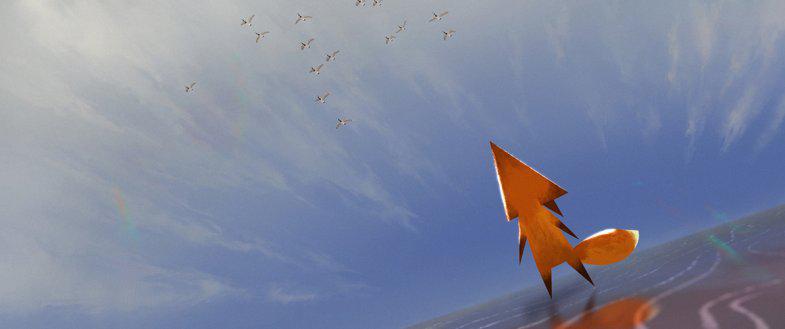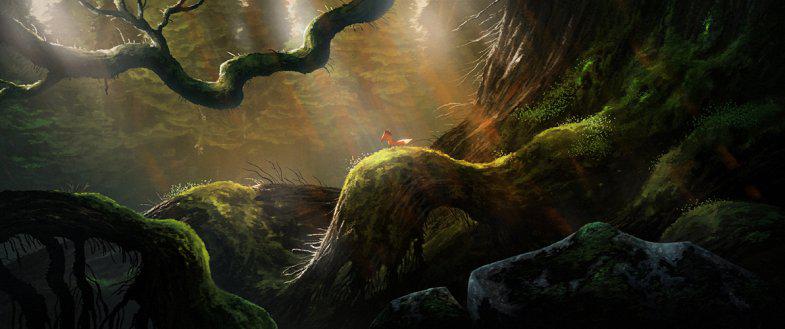Q&A with ‘Fox and the Whale’ director Robin Joseph
Having racked up awards from events including the Toronto Reel Asian International Film Festival, Sene Film Festival and Fastnet Film Festival as well earning Vimeo’s Best of the Month pick in November, it can’t be denied that India-born, Canada-based animation production artist Robin Joseph‘s first independently-produced directorial effort Fox and the Whale has made an impact. The entirely self-financed film, in which a curious fox traverses a series of lusciously-rendered environments (drawing on Robin’s artistic talents previously put to use on animated features including Mr. Peabody and Sherman, Free Birds and The Secret Life of Pets), in the pursuit of an elusive whale, serves as a supremely watchable and inspiring testament to what the marriage of individual talent and determination can achieve in this day and age. With a keystone crew including partner Kim Leow taking on character animation, the end result rivals some of the year’s best mainstream studio output, earning it a deserved place on the shortlist for the 90th Academy Awards® Best Animated Short nominations.
For quite a few readers this film serves as a first look at your work – could you provide a brief overview of your animation background and prior work before Fox and the Whale?
My background prior to the short film was working as a freelance designer and development artist for animation films. I have worked as a character designer, visual development artist and production designer.
You have a strong body of work as a concept designer for feature films, something that clearly shines through with this film. How has working on these large scale productions contributed to your approach to your own art and ideas?
My past work experience definitely helped with visualizing and designing the film. Design and colour was my way of easing into the narrative and slowly building and planning the production. The short film was a great opportunity to do things outside my comfort zone. Take each element from concept all the way through to the final shot.
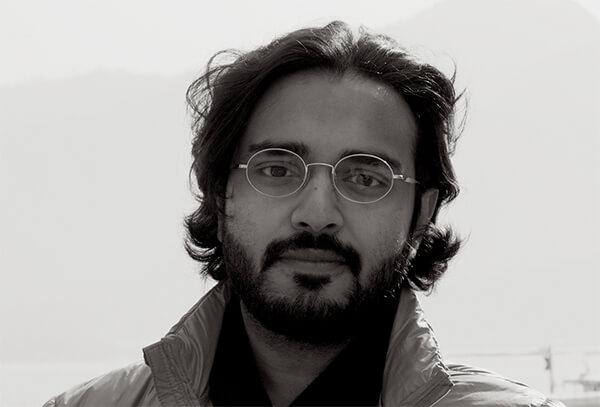
Robin Joseph
What were the circumstances that got the film off the ground – was it an entirely self-started venture?
The film was fully self-financed from my personal savings. I had been saving for a few years, and with my girlfriend Kim coming on board to handle the character animation, the timing was just right to give it a go. I felt that if I didn’t give it an honest shot now, it would never happen. I took 16 months out from all other commercial work to focus on the short full time, from boarding through final sound.
The absence of dialogue really invites the audience to take in as much of the visual storytelling as they can throughout the film. Was the story itself scripted or developed visually (and if the latter, can you elaborate on your process)?
The story was really built visually through boards. The process was quite straightforward. I would move back and forth between storyboarding in Photoshop and the edit in premiere to build the rhythm and tone of the film. It took roughly three months for the final version of the reel.
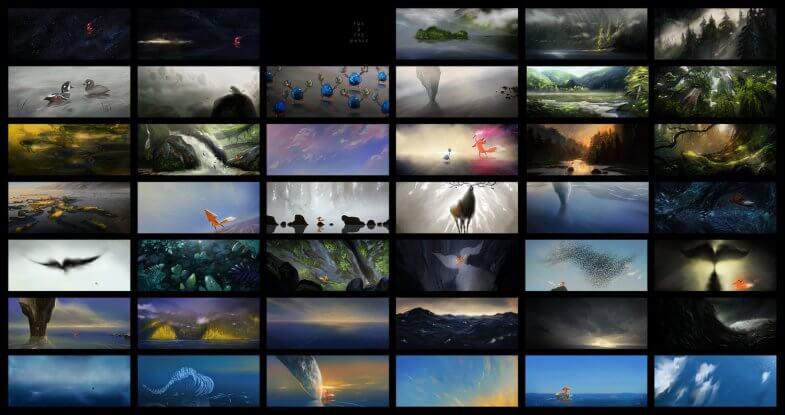
Fox and the Whale colour script (via patchoforange.com)
Can you tell me a bit about how you developed your approach to the character design and animation?
The character animation was more rooted in physicality and pantomime than emotive, expressive acting or dialogue driven. The design reflected this idea. The intent was to have a design language that gave room for subtlety and nuance in movement and performance. The design of the fox is a distillation of the film in a sense. The fox at it’s simplest is an arrowhead of a compass, trying to find it’s true north.
Previously you’ve mentioned that Kim Leow had a significant role to play in the techniques used for the film. How did the two of you come to work together, and which areas of production most benefited from her insight/skills?
Originally I had planned to do the film entirely in 2D. Kim is an incredibly talented character animator, and she really opened my eyes to the possibility of CG. Over the years, I got to watch over her shoulder as she was working on different animation jobs and personal projects. CG really opened up a huge window to a more nuanced and delicate performance. Also, trusting her with the character animation allowed me more room to focus on all the other parts of the production. I got really lucky that she came on board and believed in the film and me.
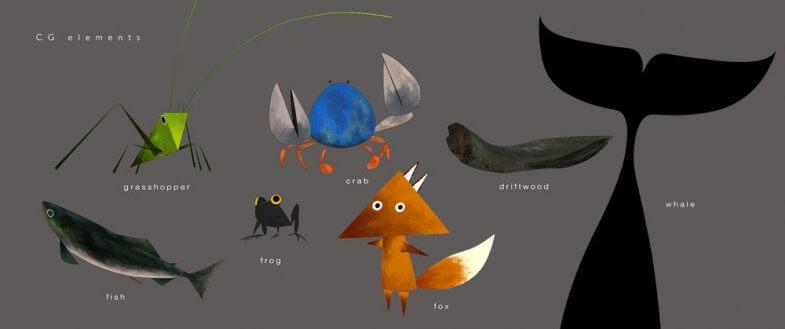
Breakdown of Fox and the Whale‘s CG elements (via patchoforange.com)
What was your working process with Kim when it came to directing the animation itself?
My only notes in animation were about pushing the little bits of nuance (for eg. little ear twitches for the fox or head tilts and shakes etc) The design really didn’t favour exaggerated acting or extremes in posing. Kim’s sensibilities and taste really match this. She already knew on a gut level what was required and very naturally picked up on it. The only other occasional suggestion was to keep a strong graphic language in posing, create readable silhouettes. On the odd shot here and there i would do a little draw over and Kim would try different cameras in Maya to match it as best as possible. The deliverables from her side for each shot was always a rendered PNG sequence, which i would bring into aftereffects. Pretty simple and straightforward for workflow.
The environment design is nothing short of stunning. Did you take any particular inspiration from real locations or artists (wildlife series/film perhaps?) you’re fond of?
A lot of inspiration for the film came from a trip I took to Victoria and Salt Spring Island in Canada. This was a few years back. It was my first time visiting the pacific coast. That experience always stayed with me. Over the years I have watched every documentary about the Pacific Rainforest belt I could get my hands on. My hope was to bring that sense of place to the short.
There’s a lot of nuanced and quite subtle VFX and compositing processes at play that really help sell the universe of the film. Were you also at the helm of this side of production and, if so, can you talk us through your pipeline?
Yes, I was doing composting and VFX on the film as well. Everything my side stayed within the creative cloud suite from Adobe. I was using After Effects and a suite of plugins from Red Giant for the compositing & VFX. Boarding, Design, Backgrounds and some 2D animation was done in Photoshop. Edit was in premiere and final sound and foley was done using audition. All rendering was handled using Media Encoder.

Fox and the Whale fire VFX (via patchoforange.com)
On top of everything else you handled foley and sound design on the film to a highly professional degree, had you trained for this or is it self-taught?
I wasn’t trained in sound but had great interest in it. It was a part of production that i approached very nervously. The short was designed to be a very sound forward film, and I had done the temp tracks for the reels. It so happened with timing and budget that I found myself in a place where I had to do the final sound design. I got to meet an incredible sound designer named Tim Nielsen, through a mutual friend Mark Osborne. Tim was so generous and helpful and loaned me a massive personal sound library and always a phone call away for advice and support. Tim’s library became the basis for most of the sound design elements in the final film. I simply got really lucky.
Given your handling of so many areas of the film’s production are there any areas in particular that you are more naturally drawn to than others?
Sound is one area that I would like to get better at. I feel a strong pull to it, to incorporate and work it in at the story stage, right along with writing and boarding. There is a beautiful article about sound design for film by veteran sound designer Randy Thom, he speaks about really using sound as a collaborator much earlier in a movie. It often gets overlooked and is relegated to post. But it can really do so much more. It can really pause or propel story and inform just as much as colour or design, or any other tool. It’s also exciting to look at familiar problems through a new lens. Recording and sound design really gives me that. I see a lot of opportunity there, and really want to have a better grasp of it!
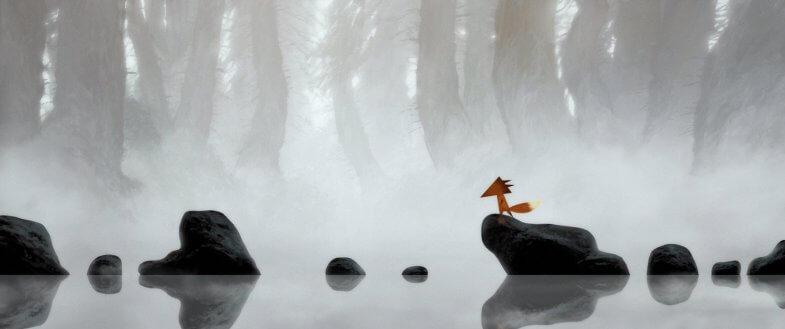
Fox and the Whale (Dir. Robin Joseph)
What were the elements of making this film you found the most challenging given your established background/skillset?
There were a lot of things i was trying out for the first time, at least in a full production capacity. Boarding, compositing, VFX, sound were all challenging. There is a certain luxury handling all these roles oneself though. The job become a lot more fluid, and the context is etched a lot more stronger in your mind. You rarely see it in isolation as individual tasks. You see it as serving the whole film. It becomes problem solving for the bigger puzzle piece and it is very fulfilling.
The film has already performed exceptionally well, do you have any future hopes for it or plans to make new work?
I am researching and writing a new project at the moment. It is a lot more ambitious. I am hoping to have more to share next year. As for Fox And The Whale, you can watch the film for free online. If anyone was interested in supporting, I will have a PDF e-book available in the new year as well.
Nominations for the 90th Academy Awards will be announced on Tuesday, January 23rd 2018.
To see more of Robin Joseph’s work visit patchoforange.com


